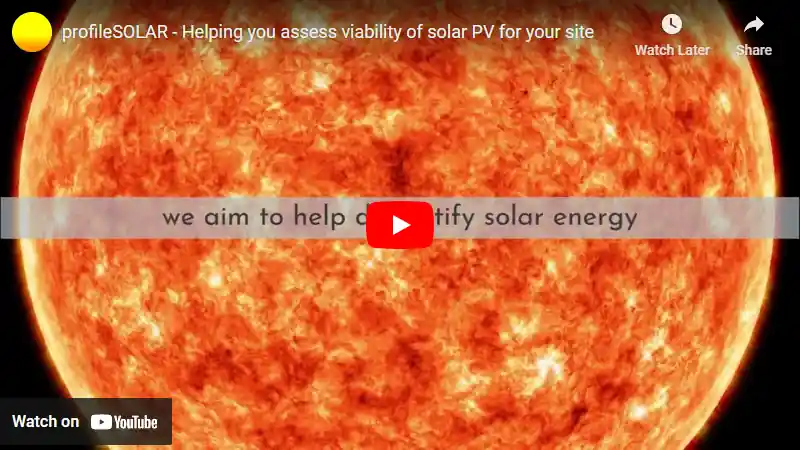

Jalalabad, Nangarhar, Afghanistan is a fairly good location for generating solar energy throughout the year. In simple terms, the amount of electricity you can get from each kilowatt of installed solar panels varies by season. During summer, you can expect around 8.18 kilowatt-hours per day; in autumn it's about 5.52; winter offers around 4.04; and in spring you'll get approximately 6.75.
Summer is clearly the best time for solar power generation here due to longer daylight hours and more direct sunlight, but even during other seasons, there's still decent production especially considering that winter days are shorter and the sun isn't as high in the sky.
If you're planning on installing fixed panel solar systems at this location, tilting them at an angle of 30 degrees towards South would be ideal to maximize your total yearly energy production.
However, there might be local factors that could hinder your system's efficiency - these could include dust storms or sand accumulation on panels which are common issues in desert-like climates like Jalalabad's. These can block sunlight from reaching your panels hence reducing their effectiveness.
To overcome such challenges and ensure higher energy output from your installation:
1) Regular cleaning: Keep a regular maintenance schedule where you clean off any dirt or debris from the surface of your panels.
2) Protective coating: Consider using protective coatings designed to repel dust if it becomes a significant issue.
3) Automated cleaning system: If budget allows and dust accumulation is severe enough to justify it, consider investing in an automated cleaning system which uses brushes or air blowers to keep panels clean without manual intervention.
4) Proper installation: Ensure that installers follow best practices so that systems are robust against local weather conditions like windstorms etc., which could potentially damage equipment over time if not properly secured.
In general though Jalalabad seems quite suitable for harnessing solar power with some precautions to be taken into account.
Note: The Northern Sub Tropics extend from 23.5° latitude North up to 35° latitude.
So far, we have conducted calculations to evaluate the solar photovoltaic (PV) potential in 4 locations across Afghanistan. This analysis provides insights into each city/location's potential for harnessing solar energy through PV installations.
Link: Solar PV potential in Afghanistan by location
Become the exclusive sponsor for Jalalabad, Afghanistan!
Solar output per kW of installed solar PV by season in Jalalabad
Seasonal solar PV output for Latitude: 34.4323, Longitude: 70.4518 (Jalalabad, Afghanistan), based on our analysis of 8760 hourly intervals of solar and meteorological data (one whole year) retrieved for that set of coordinates/location from NASA POWER (The Prediction of Worldwide Energy Resources) API:




Ideally tilt fixed solar panels 30° South in Jalalabad, Afghanistan
To maximize your solar PV system's energy output in Jalalabad, Afghanistan (Lat/Long 34.4323, 70.4518) throughout the year, you should tilt your panels at an angle of 30° South for fixed panel installations.
As the Earth revolves around the Sun each year, the maximum angle of elevation of the Sun varies by +/- 23.45 degrees from its equinox elevation angle for a particular latitude. Finding the exact optimal angle to maximise solar PV production throughout the year can be challenging, but with careful consideration of historical solar energy and meteorological data for a certain location, it can be done precisely.
We use our own calculation, which incorporates NASA solar and meteorological data for the exact Lat/Long coordinates, to determine the ideal tilt angle of a solar panel that will yield maximum annual solar output. We calculate the optimal angle for each day of the year, taking into account its contribution to the yearly total PV potential at that specific location.

Seasonally adjusted solar panel tilt angles for Jalalabad, Afghanistan
If you can adjust the tilt angle of your solar PV panels, please refer to the seasonal tilt angles below for optimal solar energy production in Jalalabad, Afghanistan. As mentioned earlier, for fixed-panel solar PV installations, it is optimal to maintain a 30° South tilt angle throughout the year.
| Overall Best Summer Angle | Overall Best Autumn Angle | Overall Best Winter Angle | Overall Best Spring Angle |
|---|---|---|---|
| 18° South in Summer | 39° South in Autumn | 49° South in Winter | 27° South in Spring |
Our recommendations take into account more than just latitude and Earth's position in its elliptical orbit around the Sun. We also incorporate historical solar and meteorological data from NASA's Prediction of Worldwide Energy Resources (POWER) API to assign a weight to each ideal angle for each day based on its historical contribution to overall solar PV potential during a specific season.
This approach allows us to provide much more accurate recommendations than relying solely on latitude, as it considers unique weather conditions in different locations sharing the same latitude worldwide.
Topography for solar PV around Jalalabad, Afghanistan
Jalalabad is located in the eastern part of Afghanistan. The topography around Jalalabad is quite varied, with a mixture of flat plains and rugged mountains. The city itself sits in a valley between the Hindu Kush mountain range to the northeast and the Spin Ghar (or Safed Koh) mountain range to the south.
The region has a semi-arid climate with very hot summers and mild winters, receiving ample sunlight throughout most of the year which makes it suitable for solar PV installations.
For large-scale solar PV projects, flat areas would be more suitable due to easier installation and maintenance. Therefore, plains near Jalalabad could be considered for such projects. Moreover, barren or sparsely vegetated lands would also be preferable as they require less land preparation before installation.
However, it's important to take into account other factors such as accessibility to transmission lines or substations for power distribution when considering locations for large scale solar PV farms. Additionally, potential environmental impacts should also be assessed before deciding on specific project sites.
Please note that while this information provides some general ideas about potential suitability for solar power generation in this area based on topography and climate conditions alone; actual feasibility requires detailed technical studies including sun irradiance levels, soil type analysis among others.
Feeling generous?

Share this with your friends!


Compare this location to others worldwide for solar PV potential
The solar PV analyses available on our website, including this one, are offered as a free service to the global community. Our aim is to provide education and aid informed decision-making regarding solar PV installations.
However, please note that these analyses are general guidance and may not meet specific project requirements. For in-depth, tailored forecasts and analysis crucial for feasibility studies or when pursuing maximum ROI from your solar projects, feel free to contact us; we offer comprehensive consulting services expressly for this purpose.
Helping you assess viability of solar PV for your site
Calculate Your Optimal Solar Panel Tilt Angle: A Comprehensive Guide
Enhance your solar panel's performance with our in-depth guide. Determine the best tilt angle using hard data, debunk common misunderstandings, and gain insight into how your specific location affects solar energy production.

.svg)





